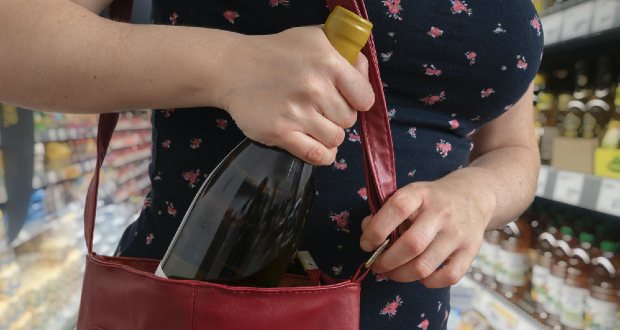The technology company added that self-checkouts are being particularly targeted, including by first-time shoplifters who have no criminal background.
Scanwatch said UK retailers had reported an 18% rise in theft in the second half of this year, while US National Retail Federation figures indicate that shoplifting has risen there by 26.5%.
In nine out of 10 of these incidents, self-checkout registers were being used.
Alcohol and other premium goods were among the items stolen, but shoplifters also took staples such as butter, milk and cheese.
Scanwatch chief executive Saulius Kaukenas, said: “This is clearly a new trend and a direct result of consumer goods price increases.
“The industry is used to a 2% shrinkage rate due to organised theft. Sadly, this rate is a given.
“Yet in 2022 retailers saw an increase in ‘accidental’ first-time shoplifters – common shoppers who have no criminal background or major criminal intentions.”
The increase in shoplifting from self-checkouts has been noted in academic studies of theft.
A 2016 joint US retailer and Leicester university study found that losses from theft at locations with self-checkout kiosks are at 4% – nearly double the common industry average.
Due to the rise in thefts, Wegmans, the major US retailer with 109 stores, discontinued self-service checkout.
Kaukenas said: “Self-checkouts often are the weakest link in retail security.
“There is also a major psychological factor in play. There is a certain stigma to tricking a human cashier.”
In 2022, retailers also recorded a major increase in mis-scanned items – when unpacked goods such as avocados turn into onions, as well as intentional incidents, where not all items in the shopping cart are scanned, or product barcodes are switched.
According to a recent US shopper survey, 20% admitted to intentionally cheating at the self-checkout registers.
“The main reasons for this is most self-checkout systems simply lack the appropriate security measures,” added Kaukenas.
Scanwatch’s particular interest in the area is that it develops loss-prevention software for self-checkout platforms.
This uses artificial intelligence and computer vision to automatically identify items scanned at the self-checkout kiosks.
This also helps to improve shopping experience, it says, as unpackaged goods – such as fruit, vegetables, baked goods – are instantly recognised, without the need for the shopper to look for the product in the picklist menu.
It matches the image of the scanned product to the one in the product database – helping to prevent the switching of barcodes.
By using security cameras installed in the self-checkout area, Scanwatch aims to check that all products in the shopping basket are scanned.
 Talking Retail Grocery and product news for independent retailers
Talking Retail Grocery and product news for independent retailers





